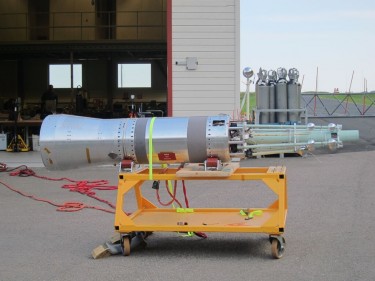
Researchers from the University of Washington are awaiting the launch an over 50-foot-long rocket from a launch site in Norway into the upper reaches of the atmosphere to observe and measure a puzzling phenomenon.
This scientific mission, led and funded by the U.S. Naval Research Laboratory, will simultaneously create and observe “dusty plasmas” in Earth’s outer atmosphere. These hot, charged clouds of ions, electrons and dust form and dissipate naturally when swift-moving objects move through the atmosphere — from a satellite launching into orbit to a meteorite burning up in the atmosphere. Dusty plasmas are thought to be a common source of interference for radar and radio communications.
“From a practical standpoint, normal atmospheric dynamics can get completely disrupted for a period of time,” said UW professor of Earth and space sciences Robert Holzworth, who is working on this project along with his departmental colleague professor Michael McCarthy.
Read more at UW Today »
